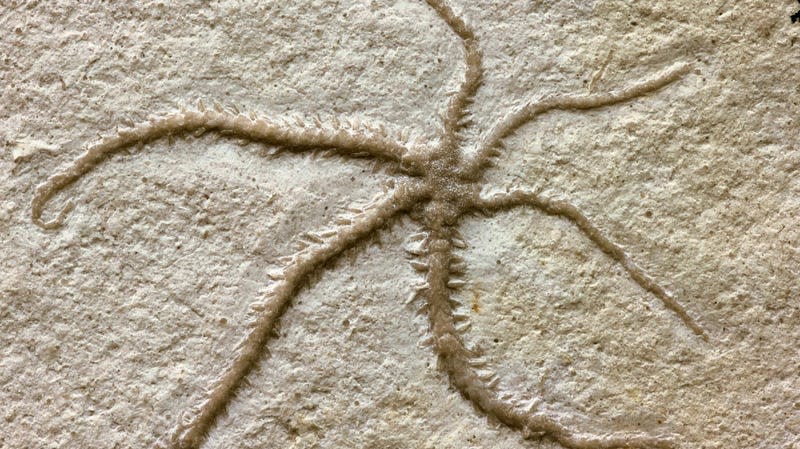Stunning 150-Million-Year-Old Fossil Shows a Brittle Star Cloning Itself

To the untrained eye, the ancient brittle star fossil above looks like what you’d expect of a now-especially-brittle echinoderm. But the fossil is quite rare: It captures the moment at which the brittle star was cloning itself, regenerating three of its arms as it died.
The specimen was a chance find during a 2018 dig in a limestone deposit west of Nusplingen, Germany. The same fossil bed yielded ancient sponges, crinoids, and ammonite coprolites and beaks. If you look closely, you’ll see the three arms on the fossil’s right side are thinner and slightly shorter than those on its left side. To the team’s knowledge, the specimen is just the second case of a fossil with a regenerating body half, and the first in which its regeneration appears connected to the animal’s six-fold symmetry and clonal fragmentation.
The newly defined species—Ophiactis Hex—dates to the Late Jurassic, about 150 million years ago. Brittle stars are not starfish; though both typically have five arms, they constitute different classes of echinoderms, the same invertebrate group that includes sea cucumbers (brittle stars and starfish do share a common ancestor, however). Though many brittle stars are five-armed, the study authors note that O. hex “shows a regular six-fold symmetry without any signs of accidental ray addition, suggesting that the individual was hexamerous before fragmentation.” However, they note that it is not possible to say for sure that the animal was regularly six-armed from just one specimen.
Based on its features, including its small body size and arm spines, the team concluded that the brittle star had an epizoic lifestyle: It lived on a host creature, perhaps sponges that grew in the same environment. The new paper appears in Royal Proceedings of the Royal Society B.
Whatever other conclusions might be drawn from the fossil—about brittle star evolution, or cloning in evolutionary history—what is clear is that the fossil is pretty freakin’ cool.
More:Paleontologists Disagree About What This Exquisite Shark Fossil Actually Is

